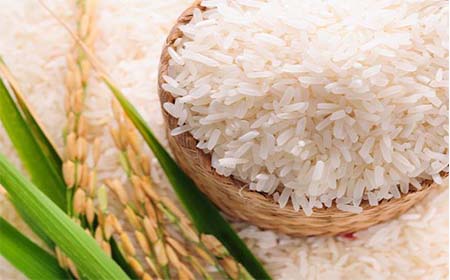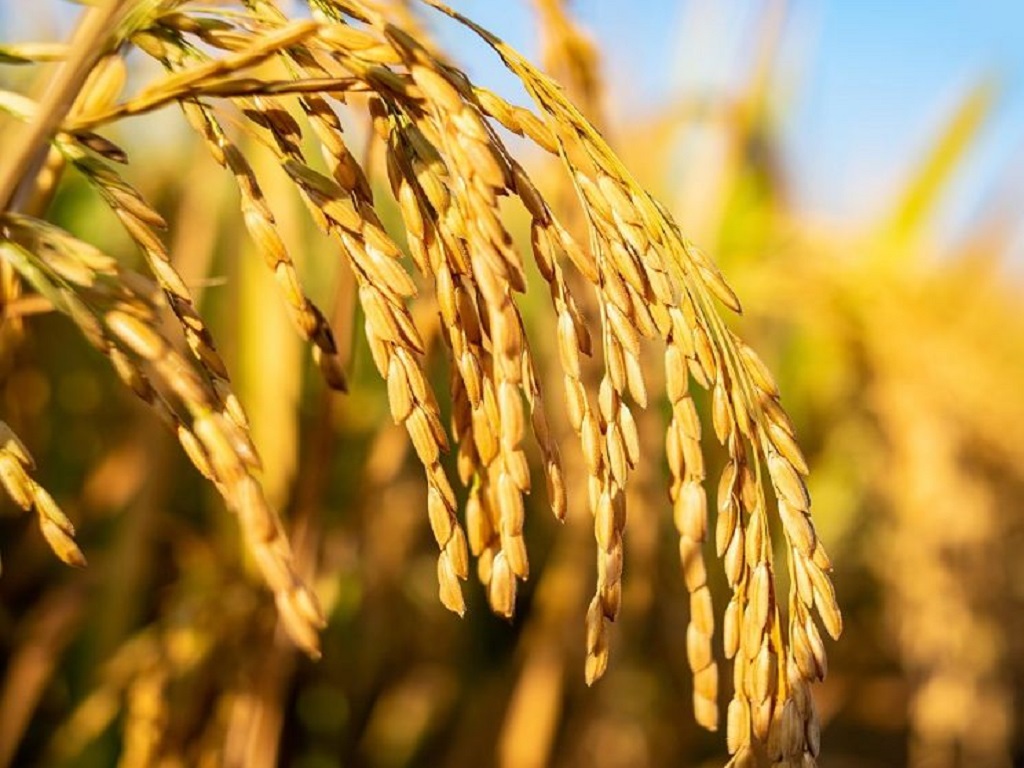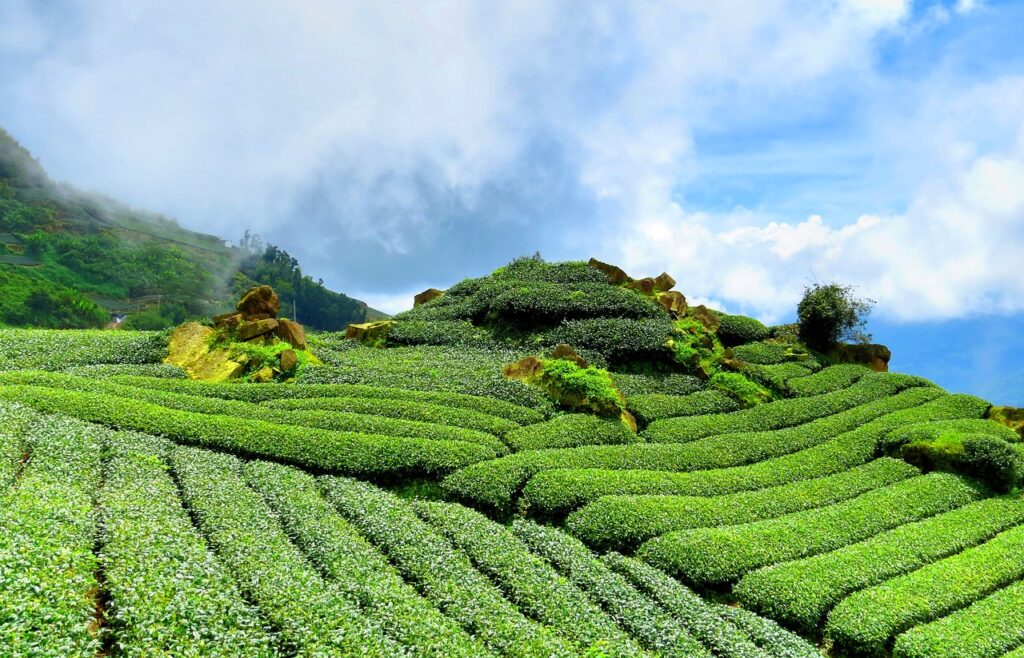History of Spices
Archaeologists estimate that the history of uses of spices by humans is many years old perhaps from as far back as 50,000 B.C. Early documentation suggests that hunters and gatherers wrapped meat in the leaves of bushes, accidentally discovering that this process enhanced the taste of the meat, as did certain nuts, seeds, berries, and bark. Since then, a primitive human would have learned uses of the special qualities of aromatic plants, i.e., sweet-smelling spices to help flavor their food and taste it better. They would have offered all sorts of aromatic herbs to his primitive gods. Slowly they would have used the spices to heal themselves while they were ill. From that moment on, spices played an important role in human existence. Abundant anecdotal information further documents the historical use of herbs and spices for their health benefits. Over the years, spices and herbs found they are used by humans for medicinal purposes also. Spices and herbs this way slowly started their journey in human life to mask unpleasant tastes and odors of food, for medicinal healing, and later, to keep food fresh. However ancient civilizations did not distinguish much between those spices and herbs used for flavoring from those used for medicinal purposes. When leaves, seeds, roots, or gums had a pleasant taste or agreeable odor they became in demand and gradually became a norm for that culture as a condiment. Spices then were also valuable as items of exchange and trade. For example, the Bible mentions that in 1000 BC, Queen Sheba visited King Solomon in Jerusalem and offered him “120 measures of gold, many spices, and precious stones.”
ANCIENT EGYPT
Historically, culinary spices and herbs have been used as food preservatives and for their health-enhancing properties. Papyri from Ancient Egypt in1555 BC classified coriander, fennel, juniper, cumin, garlic, and thyme as health-promoting spices. Records from that time also note that laborers who constructed the Great Pyramid of Cheops consumed onion and garlic as a means to promote health. The use of herbs by Egyptians for embalming and their need for exotic herbs helped stimulate world trade. The city of Alexandria in Egypt once was the main trading center for spices because of its port.
EARLY CHINESE INFLUENCE
According to ancient myths, Shen Nung likely wrote: “Pen Ts’ao Ching” or “The Classic Herbal” around 2700 BC. The early publication mentioned more than a hundred medicinal plants including the spice cassia, which is similar to cinnamon (called “kwei”). A later, more comprehensive Chinese herbal, “Pen Ts’ao Kang Mu” was published in 1596 by Li Shih Chen. Other historical evidence suggested that cassia was an important spice in south China when the province “Kweilin,” meaning “Cassia Forest,” was founded around 216 BC.
Early on, nutmeg and cloves from the Moluccas were brought to China. Anecdotal evidence suggests that Chinese courtiers in the 3rd century BC carried cloves in their mouths so their breath was sweet when addressing the emperor. During the 5th century, ginger plants were grown in pots and carried on long sea voyages between China and Southeast Asia to provide fresh food and prevent scurvy.
ANCIENT MESOPOTAMIA
Ancient cuneiform records noted spices and herbs used in Mesopotamia in the fertile Tigris and Euphrates valleys, where many aromatic plants were known. Sumerian clay tablets of medical literature dating from the 3rd millennium BC mention various odoriferous plants, including thyme (5-7) A scroll of cuneiform writing, established by King Ashurbanipal of Assyria (668-633 BC), records a long list of aromatic plants, such as thyme, sesame, cardamom, turmeric, saffron, poppy, garlic, cumin, anise, coriander, silphium, dill, and myrrh. The Ancient Assyrians also used sesame as vegetable oil.
King Merodach-baladan II (721-710 BC) of Babylonia grew 64 different species of plants in his royal garden. He kept records on how to cultivate many spices and herbs (e.g., cardamom coriander, garlic, thyme, saffron, and turmeric). The magic religion of Babylonia involved an ancient medical god of the moon, who controlled medicinal plants. Potent parts of herbs were not allowed sun exposure and were harvested by moonlight.
Onions, garlic, and shallots became popular condiments in Persia by the 6th century BC. Records from King Cyrus (559-529 BC) noted a wholesale purchase of 395,000 bunches of garlic. Persians also produced essential oils from roses, lilies, coriander, and saffron.
INDIAN ORIGINS
Spices and herbs (e.g., black pepper, cinnamon, turmeric, cardamom) have been used by Indians for thousands of years for both culinary and health purposes. Spices indigenous to India (e.g. cardamom and turmeric) were cultivated as early as the 8th century BC in the gardens of Babylon (Sinha, 2003; Tapsell, 2006). Susruta, an ancient surgeon (around 4th century BC) used white mustard and other aromatic plants in bed sheets to ward off malignant spirits. He also applied a poultice from sesame to post-operation wounds which may have acted as an antiseptic.
Medical writings of Charaka (1st century) and Susruta II (2nd century) referenced spices and herbs. Susruta II also used spices and herbs such as cinnamon, cardamom, ginger, turmeric, and pepper for healing purposes. Spices such as cardamom, ginger, black pepper, cumin, and mustard seed were included in ancient herbal medicines for different types of health benefits. In Ayurvedic medicine, spices such as cloves and cardamom were wrapped in betel-nut leaves and chewed after meals to increase the flow of saliva and aid digestion.
To ENQUIRE or BUY Indian Spices, Black Cardamom, Ginger, Turmeric, Lakadong Turmeric, Chilies, and others, CLICK the button below:
GREECE AND ROME (331 BC TO 641)
Ancient Greeks imported Eastern spices (pepper, cassia, cinnamon, and ginger) to the Mediterranean area; they also consumed many herbs produced in neighboring countries. Examples include caraway and poppy seeds for bread, fennel for vinegar sauces, coriander as a condiment in food and wine, and mint as a flavoring in meat sauces. Garlic was widely used by the country’s people in much of their cooking. Ancient Greeks wore parsley and marjoram as a crown at their feasts in an attempt to prevent drunkenness. Spices and herbs played an important role in ancient Greek medical science. Hippocrates (460-377 BC), wrote about spices and herbs, including saffron, cinnamon, thyme, coriander, mint, and marjoram. He noted that great care should be given to the preparation of herbs for medical use. Of the 400 herbal remedies utilized by Hippocrates, at least half are in use today (3). Roughly 500 years later, Theophrastus (372-287 BC), sometimes called the “Father of Botany,” wrote 2 books that summarized the knowledge of over 600 spices and herbs.
Dioscorides, a Greek Physician of the 1st century, wrote De Materia Medica, which was used for botany and medicinal knowledge in both the East and the West for over 1500 years. The remedies were based on an extensive catalog of spices and herbs and were more systematic than his predecessors (who based the remedies on magic and superstition). The Romans were extravagant users of spices and herbs. Spice-flavored wines were used in ancient Rome and spice-scented balms and oils were popular for use after the bath. Since spices were considered to have health properties, they were also used in poultices and healing plasters. When the Roman Empire extended to the northern side of the Alps, the Goths, Vandals, and Huns of those regions were introduced to pepper and other spices from the East. These cultures were familiar with caraway, onions, rosemary, and thyme and gradually became attracted to the Eastern spices.
ARAB AND MUSLIM ROLE IN SPICES AND HERBS (ANCIENT TIMES TO 1096)
Early on, spices were used as a source of trading. During the ancient Roman Empire, trading largely came from Arabia. Traders supplied cassia, cinnamon, and other spices and deliberately kept the source of their products secret. The intent was to have a monopoly on the spice trade and the Arabians spun great tales about how they obtained the spices to keep their resource value high. They continued to keep the secret of the origin for several centuries from both Ancient Greek and Ancient Roman civilizations (Rosengarten, McCormick) until about the 1st century, AD, when the Roman scholar Pliny made the connection between the Arabian stories and the inflation of spices and herbs.
Prophet Mohammed (570-632), who established the principles of Islam in the Koran, also co-owned a shop that stocked myrrh, frankincense, and Asian spices. For 4 centuries following the death of Prophet Mohammed, his followers (Mohammedans) created a flourishing civilization. The Mohammedans were outstanding scientists of their time. They advanced the process of extracting flower scents from blossoms and herbs and created distillation techniques to distill essential oils from aromatic plants. Later (around the 9th century), Arab physicians used spices and herbs to formulate syrups and flavoring extracts.
SPICES AND HERBS IN EUROPE DURING THE MIDDLE AGES (ABOUT 600 TO 1200)
In the early part of the Middle Ages (before the Crusades), Asian Spices in Europe were costly and mainly used by the wealthy. A pound of saffron cost the same as a horse; a pound of ginger, as much as a sheep; 2 pounds of mace as much as a cow. A German price table of 1393 lists a pound of nutmeg as worth 7 fat oxen. Pepper, as well as other spices and herbs, was commonly used as a monetary source. Eastern Europeans paid 10 pounds of pepper to gain access to trading with London merchants. Throughout Europe, peppercorns were accepted as a substitute for money (some landlords would get paid as “peppercorn rent”). Peppercorns, counted out one by one, were accepted as a currency to pay taxes, tolls, and rents (partly because of a coin shortage). Many European towns kept their accounts in pepper. Wealthy brides received pepper as a dowry. With the coming of the Crusades (1096), the international exchange of goods became common. Gradually, Asian spices (pepper, nutmeg, cloves, and cardamom) became less expensive and more widely available. Spices were used to camouflage bad flavors and odors, and for their health benefits. Spiced wines were also popular.
European apothecaries used Asian spices (e.g., ginger, pepper, nutmegs, cinnamon, saffron, cardamom) as well as garden herbs in their remedies and elixirs. The remedies were largely based on Arabian medical teachings. An important person in developing and growing local herbs was the King of France and Emperor of the West, Charlemagne (742-814). He was the first leader to have farmers plant an abundance of culinary herbs (e.g., anise, fennel, fenugreek, sage, thyme, parsley, and coriander). European cultivation of spices and herbs was largely controlled by the church during this period. Religious herb and spice feasts were common. Some ancient customs and superstitions (e.g., tying bundles of herbs to stable doors to keep the witches out) were also continued. In 1180, King Henry II founded a pepperer’s guild of wholesale merchants, which was a predecessor for a modern-day grocery store. The guild included spice trade management, which included cleaning and preparing the spices for sale. The original Spicers and Pepperers helped launch the apothecaries and later became medical practitioners. Some common medical practices included placing sponges soaked with cinnamon and clove extracts under patients’ noses, sterilizing rooms with sage smoke, and prescribing saffron, garlic soup, and juniper wine for health benefits.
AGE OF SPICE DISCOVERY (1300 TO 1500)
Marco Polo mentioned spices frequently in his travel memoirs (about 1298). He described the flavor of the sesame oil of Afghanistan and the plants of ginger and cassia of Kain-du (the city of Peking), where people drank a flavourful wine of rice and spices. He reported that the wealthy in Karazan ate meat pickled in salt and flavored with spices, while the poor had to be content with hash steeped in garlic. He mentioned in Hangchow, that 10,000 pounds of pepper were brought into that heavily populated city every day. Polo also described vast plantings of pepper, nutmegs, cloves, and other, valuable spices he had seen growing in Java and the islands of the China Sea, and the abundance of cinnamon, pepper, and ginger on the Malabar Coast of India. Some anecdotal evidence suggests that Polo’s accounts led to an increased international spice trade during the 13th and early 14th centuries. When Christopher Columbus set out on his second voyage (1493), he brought the Spanish physician Diego Chanca, who helped to discover the spices capsaicin (red pepper) and allspice for Spanish cuisine.
King Manual had a large influence on bringing spices to Portugal. Several sea voyages helped establish a trade route to India. In 1501, the port of Lisbon, Portugal had large quantities of Indian spices such as cinnamon, cassia, ginger, pepper, nutmeg, mace, and cloves. King Manuel sent trade missions to develop new markets for his spices throughout Europe, especially in Germany. As the spice wealth poured into Lisbon, the Portuguese crown monopolized the lucrative but risky pepper trade. Cargoes of East Indian vessels were sold at high prices by the king of Portugal to large European syndicates. As in medieval times, the price of pepper served as a barometer for European business in general.
AMERICAN HISTORY (1600 TO 1861)
Western medicine is rooted in plant-based medicine. The United States used plants as the primary source of medicine from the time of the Mayflower (1620) until after World War I (1930) (Mahady, 2001). Modern medicines, such as aspirin from the willow bark are rooted in plant-based medicine. When tea drinking became unpatriotic in Colonial America, spices and herbs were used to replace traditional tea. Sassafras bark, chamomile flowers, spearmint leaves, lemon balm leaves, raspberry leaves, loosestrife, goldenrod, dittany, blackberry leaves sage, and many others were often used as a beverage. Toward the end of the 18th century, the United States entered the world spice trade. The British taxes and trade restrictions of colonial days no longer obstructed American commerce. They traded American salmon, codfish, tobacco, snuff, flour, soap, candles, butter, cheese, and beef, for spices (pepper, cassia, cloves, cinnamon, and ginger).
Between 1797 and 1846 Salem, Massachusetts enjoyed a flourishing Sumatra pepper trade and profited immensely from taxation and sales. Most of the enormous quantities of pepper were re-exported to European ports (Stockholm, Gothenburg, Hamburg, Copenhagen, Antwerp) or were transshipped to Philadelphia, Boston, and Baltimore for processing and distribution by other American merchants and exporters. The largest single cargo on record for one of the Salem pepper fleets was just over 1 million pounds (500 tons) of pepper, brought from Sumatra to Salem in 1806 by the Eliza, a sailing ship of 512 tons. After 1846, an overproduction of spices brought a gradual decline in its economic importance until the final demise of the Salem pepper trade following the outbreak of the Civil War in 1861.
MODERN SPICE USAGE
Unlike earlier times when monopolies dominated the spice trade, commerce in spices is now relatively decentralized. Throughout the world, spices and herbs are frequently used in cuisine, largely to improve flavor and to provide new tastes. Today, people are increasingly interested in enjoying spices and herbs for health benefits.

Spice Bowl of Cohere
To know more about our Spice Basket and offers, CLICK the button below:





